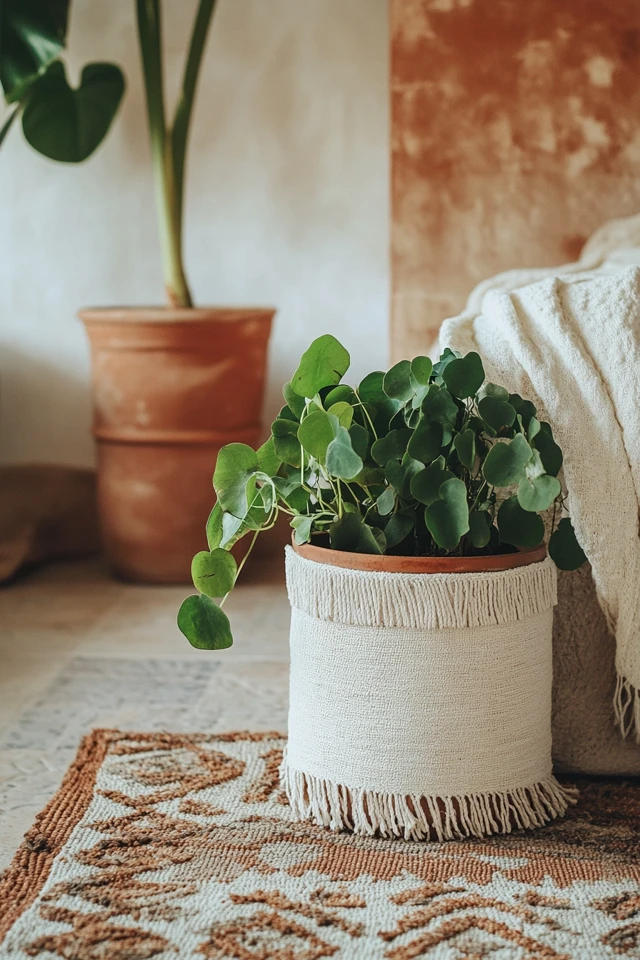Incorporating eco-friendly and sustainable decor into your home isn’t just a trend—it’s a lifestyle choice that benefits the planet while creating a thoughtful and stylish space. It’s about finding beauty in materials that are kind to the environment, celebrating craftsmanship, and designing a space with intention and care.
I started my journey into sustainable design when I stumbled upon a vintage wooden chair at a flea market. It was sturdy, full of character, and made from reclaimed wood—so much better than a mass-produced alternative. That chair sparked a newfound love for eco-friendly decor, and over the years, I’ve transformed my spaces with natural fibers, upcycled treasures, and ethically sourced accents. Let me show you how you can do the same.
Why Choose Eco-Friendly and Sustainable Decor?
- Environmentally Conscious: Reduces waste and minimizes your carbon footprint.
- Unique Aesthetic: Handcrafted and natural materials often carry a distinct beauty.
- Durability: Sustainable furniture is typically made with quality craftsmanship, lasting for years.
- Supports Ethical Practices: Many sustainable brands prioritize fair wages and responsible sourcing.
1. Opt for Natural Materials
Why It’s Sustainable:
Natural materials like wood, bamboo, rattan, and cork are renewable, biodegradable, and bring warmth to any space.
How to Do It:
- Choose solid wood furniture instead of particleboard alternatives.
- Add bamboo blinds or rattan chairs for a breezy, eco-friendly vibe.
- Use cork for coasters, bulletin boards, or even flooring.
Pro Tip: Look for FSC-certified wood to ensure it’s sourced from responsibly managed forests.
2. Incorporate Recycled and Upcycled Decor
Why It’s Sustainable:
Recycling and upcycling breathe new life into materials that might otherwise go to waste.
How to Do It:
- Shop for upcycled furniture, like tables made from reclaimed wood.
- Turn old glass jars into vases, candle holders, or storage containers.
- Use vintage suitcases as chic storage solutions or a quirky side table.
Pro Tip: Hit up flea markets, thrift stores, or online platforms like Facebook Marketplace to find unique pieces with character.
3. Choose Non-Toxic Paints and Finishes
Why It’s Important:
Traditional paints and finishes can release VOCs (volatile organic compounds) into the air, harming both your health and the environment.
How to Do It:
- Use low-VOC or VOC-free paints for walls and furniture.
- Opt for natural finishes like beeswax or tung oil for wooden surfaces.
- Choose clay-based or milk paint for a natural, matte aesthetic.
Pro Tip: Test the paint on a small patch to ensure the finish and color meet your expectations.
4. Add Sustainable Textiles
Why It Enhances Your Space:
Textiles made from organic, natural fibers are biodegradable and free from harmful chemicals.
How to Do It:
- Use organic cotton or linen bedding for a soft, breathable feel.
- Add wool or jute rugs for texture and warmth.
- Choose curtains or throw pillows made from hemp, bamboo, or recycled fabrics.
Pro Tip: Look for certifications like GOTS (Global Organic Textile Standard) when buying sustainable textiles.
5. Light Up Your Space with LED Bulbs
Why It’s Sustainable:
LED bulbs use up to 75% less energy and last significantly longer than traditional bulbs.
How to Do It:
- Replace incandescent or halogen bulbs with energy-efficient LEDs.
- Use LED strip lights under cabinets or shelves for subtle lighting.
- Choose warm-toned LEDs for a cozy, inviting ambiance.
Pro Tip: Combine LEDs with dimmer switches for adjustable lighting that saves even more energy.
6. Bring in Greenery
Why It’s Sustainable:
Houseplants not only purify the air but also connect your home to nature, fostering a sense of calm.
How to Do It:
- Add low-maintenance plants like pothos, snake plants, or peace lilies.
- Use terracotta pots or upcycled containers for planting.
- Incorporate living walls or vertical gardens if you’re short on space.
Pro Tip: Choose plants that thrive in your home’s light conditions to reduce maintenance and energy use.
7. Prioritize Multi-Functional Furniture
Why It’s Eco-Friendly:
Fewer pieces of furniture mean less resource consumption and waste.
How to Do It:
- Invest in a sofa bed for a guest room or studio apartment.
- Choose an extendable dining table for added versatility.
- Opt for storage ottomans or benches to maximize space.
Pro Tip: Select high-quality, timeless designs to ensure longevity and adaptability over the years.
8. Reduce Plastic Use in Decor
Why It’s Sustainable:
Plastic takes centuries to decompose and often ends up polluting the environment.
How to Do It:
- Swap plastic organizers for wooden or metal options.
- Use glass or ceramic containers for kitchen storage.
- Avoid plastic decor—opt for materials like clay, stone, or paper.
Pro Tip: Start small by replacing one plastic item at a time to make the transition more manageable.
9. Support Local Artisans
Why It Matters:
Handcrafted goods often use fewer resources and support local communities.
How to Do It:
- Buy handmade pottery, woven baskets, or carved wooden decor from local markets.
- Invest in custom furniture from small, local businesses.
- Display artwork by local painters or photographers.
Pro Tip: Ask artisans about their materials and processes to ensure sustainability.
10. Embrace Minimalism
Why It’s Sustainable:
Owning fewer, higher-quality items reduces waste and promotes mindful consumption.
How to Do It:
- Declutter your space and keep only what you truly love or need.
- Invest in versatile decor that works across multiple seasons and styles.
- Follow the “one-in, one-out” rule to avoid accumulating unnecessary items.
Pro Tip: Focus on creating negative space in your room to let sustainable decor shine.
Picture Gallery
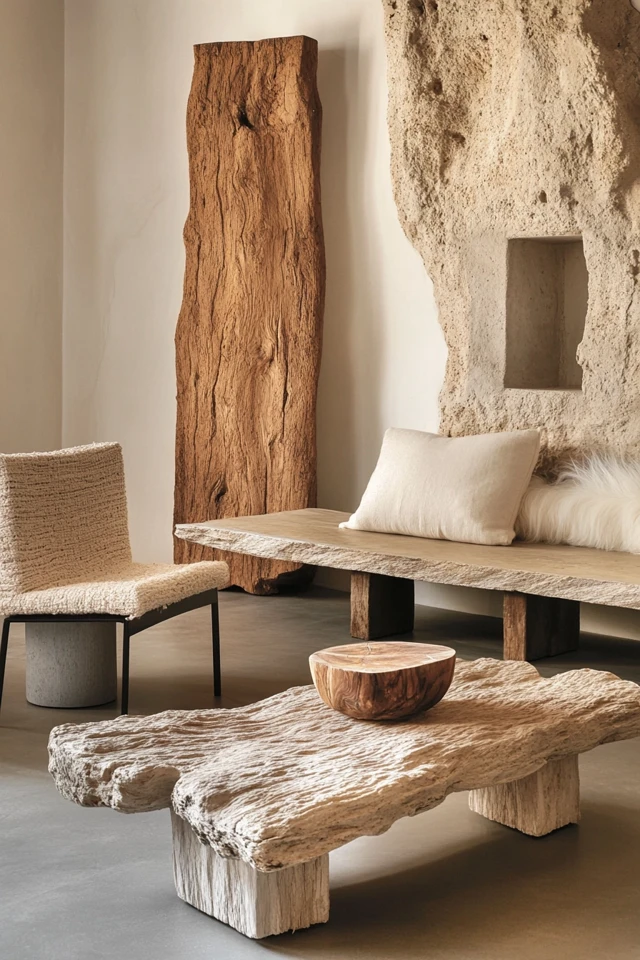
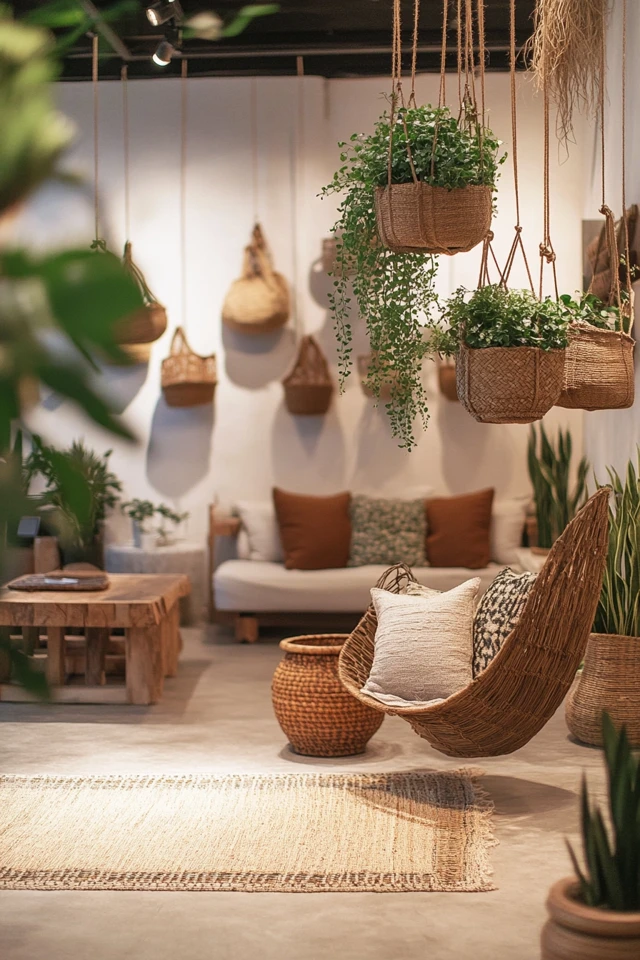
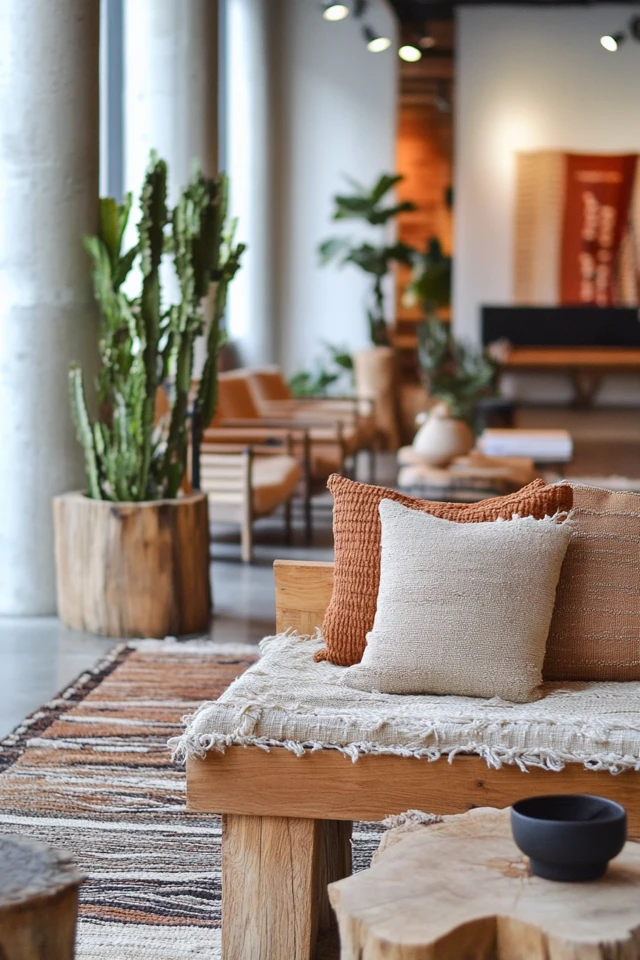
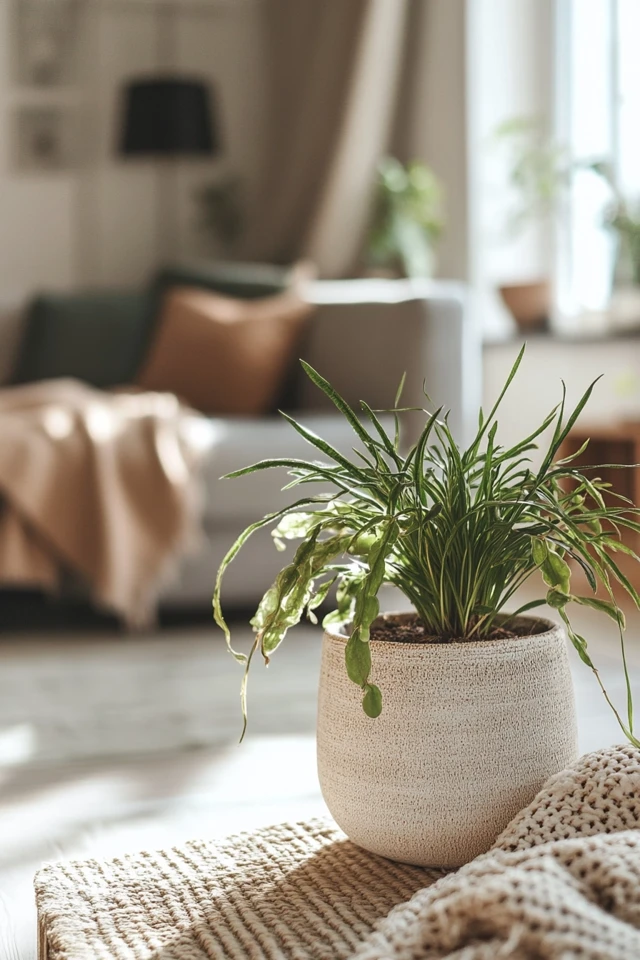
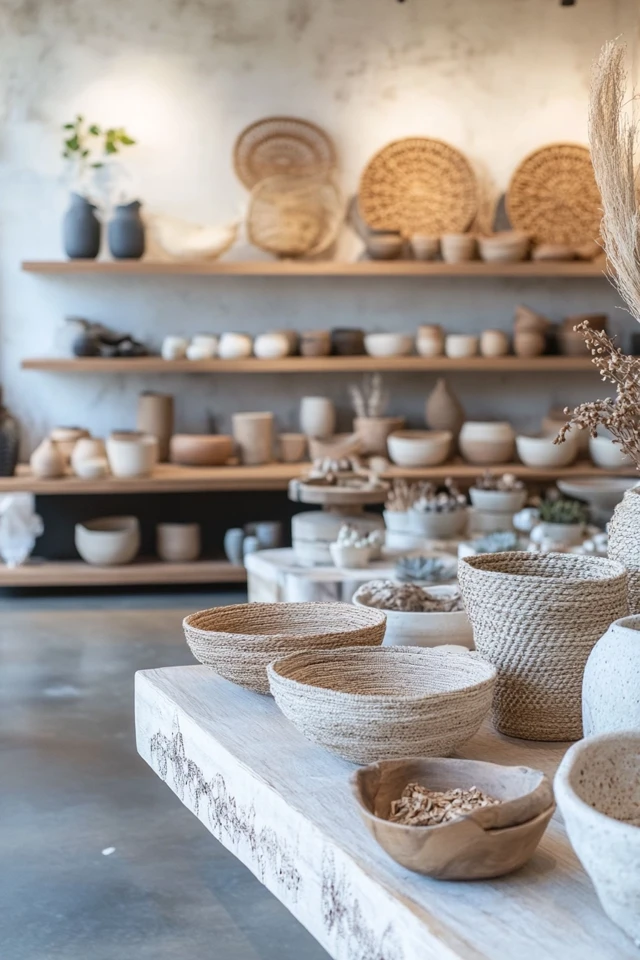
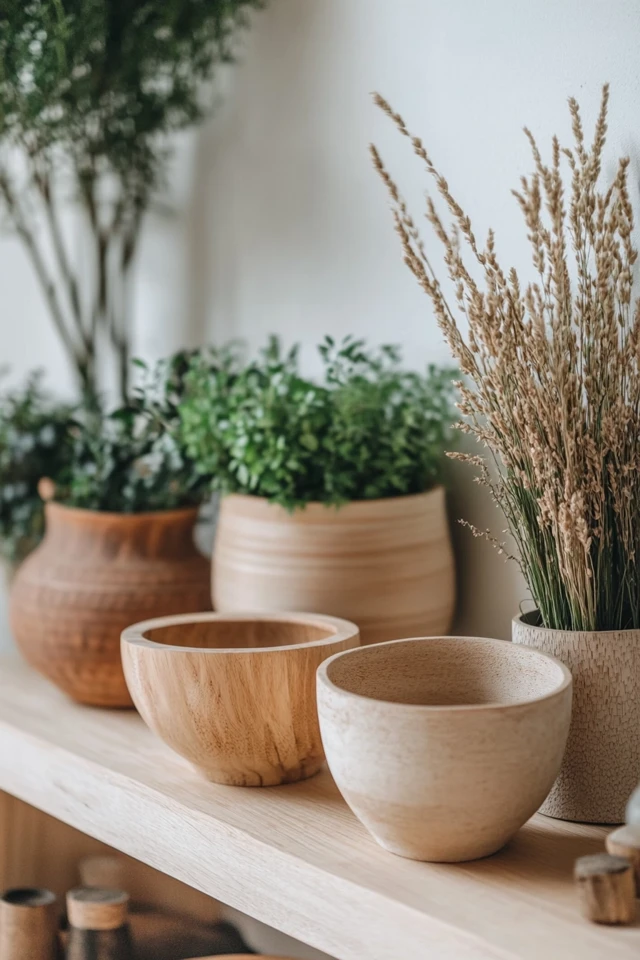
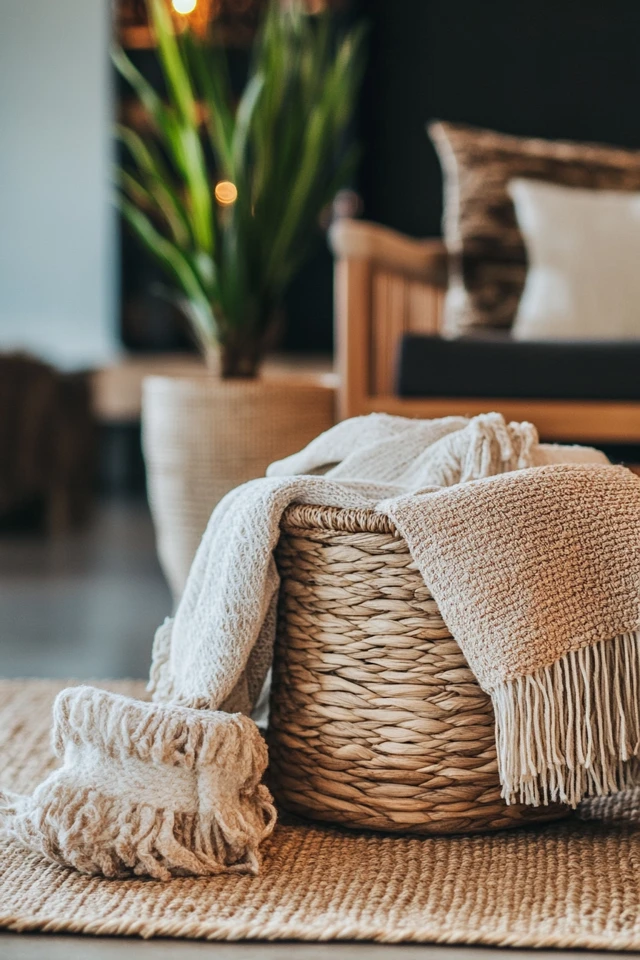
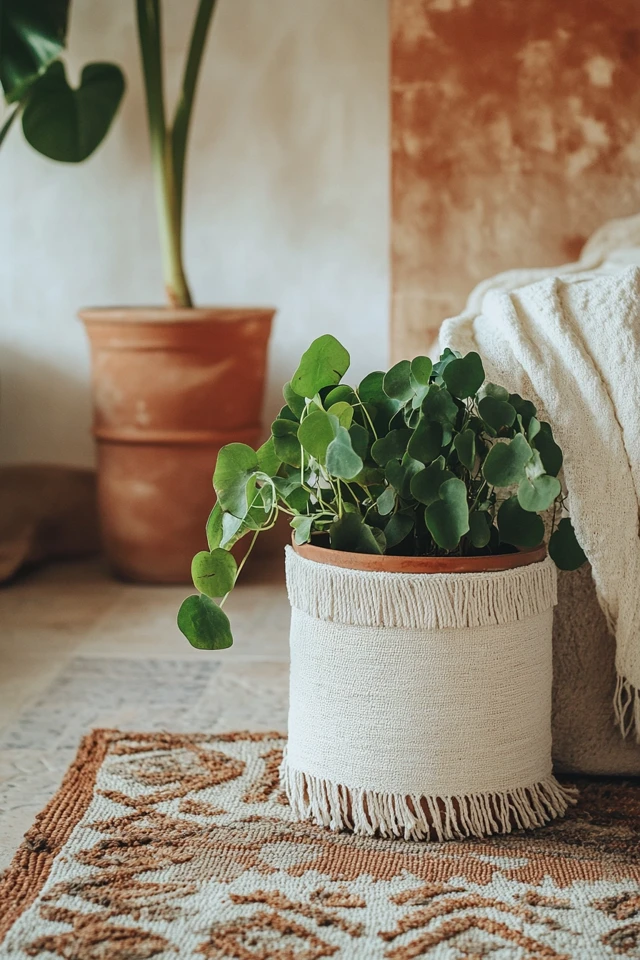
Conclusion
Styling a room with eco-friendly and sustainable decor is about more than just aesthetics—it’s about creating a meaningful space that aligns with your values. By choosing natural materials, upcycled treasures, and energy-efficient solutions, you can reduce your environmental impact while curating a beautiful, timeless home.
Sustainability doesn’t have to mean sacrificing style. In fact, it often results in spaces that feel warmer, more personal, and full of character. So, start small—swap out your plastic containers, invest in a few natural textiles, or adopt a vintage furniture piece. Every step brings you closer to a home that’s as kind to the planet as it is to your soul.
FAQs
1. What are the best materials for sustainable decor?
Natural materials like bamboo, reclaimed wood, cork, rattan, and organic textiles are excellent choices for eco-friendly decor.
2. Where can I find sustainable furniture?
Check out local thrift stores, flea markets, or brands that specialize in sustainable practices, such as West Elm’s eco line or Etsy for handcrafted items.
3. How can I make my home eco-friendly on a budget?
Start by upcycling existing items, shopping secondhand, and using energy-efficient lighting. Small changes, like switching to reusable containers, also make a big difference.
4. Are plants considered sustainable decor?
Yes, plants are a sustainable way to enhance your decor, purify the air, and connect your home to nature. Choose low-maintenance varieties for ease of care.
5. What’s the easiest way to start transitioning to sustainable decor?
Begin with small swaps, such as replacing plastic items with natural or recycled alternatives, and gradually invest in timeless, eco-friendly furniture and accessories.

